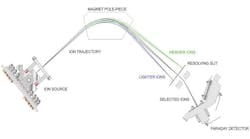2020 was a good year for cell and gene therapy (CGT) manufacturers. Financial investment in CGT companies skyrocketed by 200% and the researchers behind CRISPR/ Cas9 brought home a Nobel Prize. As the world gathered courage to face the pandemic, CGT innovators responded by gathering momentum.
Similar momentum was building across the pharma industry. The blistering speed of vaccine research made headlines, but extraordinary breakthroughs were quietly taking place in all corners of the industry. Bold thinking and modern facility designs brought new approaches to facilitating progress.
Of all the positive changes, the following five trends will play a particularly important role in forever changing how we formulate, evaluate and distribute therapies.
Adaptive manufacturing will change facility design
As the fight against COVID-19 intensified, oncology vaccine researchers adapted their mRNA platforms to support COVID research. This is just one example of how the ability to pivot in response to a shift in demand or a breakthrough in research will become an increasingly important determinant of success. Companies will have to move fast to stay competitive — and be flexible.
This need for flexibility will drive project owners away from the traditional, dedicated facility. To get the most of their capital expenditure, they’ll instead turn towards facilities designed for the unknown, capable of adapting smoothly and cost-effectively to change.
Procurement strategies will address supply chain turbulence
The pandemic exposed — and considerably worsened — challenges that already existed in the supply chain.
Now, leading experts are rethinking how projects are scoped, scheduled and budgeted in order to address these chronic challenges. For example, a lean and agile design process makes it possible to pre-order long-lead materials early in the capital project life cycle, ensuring that when construction finishes, project owners aren’t held up by delays in equipment delivery.
Supply chain ethics questions will lead to solutions
COVID-19 has turned our attention to global distribution challenges as leaders attempt to distribute vaccines in areas where robust cold chain logistics and crucial infrastructure don’t exist.
To address these and other ethically charged supply chain challenges, we need sustainable solutions that support the distribution of all drugs to all who need them. Take microneedles, for example. By making it safer and easier for people to self-administer an intravenous drug, this technology could bring vaccines to communities with limited medical resources.
Precision medicine will own the spotlight
The field of precision medicine is evolving at a staggering speed, and it has broad implications for how pharma innovators design, build and operate a new generation of testing labs and commercial facilities. These facilities will focus on the aseptic production of small, personalized batches — sometimes as small as a single dose. This radical change will impact everything from process design to cleaning and decontamination protocols.
The research life cycle is accelerating
Because of COVID-19, we now know that innovating new products quickly is not only possible, it’s essential.
Now that the world — and pharma companies — have had a glimpse of how quickly we can move together, there’s no going back. Pharma’s appetite for removing silos and fostering an open, productive exchange of knowledge between researchers, regulators and manufacturers will grow as time goes on, and the availability of new life-saving therapies will grow with it.
To support this trend in terms of accelerated capital project delivery, the industry is embracing methods like design-build, Enterprise Project Management (EPM), and Integrated Project Delivery (IPD). As project owners experience the benefits of these lean and collaborative project delivery methods, they’ll increasingly nudge out the more traditional design-bid-build delivery systems.
Change may be constant, but the scale of change? That’s always in flux, and right now the pharma industry is verging on some of the biggest, most promising shifts in living memory.
To seize this moment, project owners and their partners need to understand the latest regulations, monitor emerging technologies, and take advantage of practical, on-the-ground solutions designed for this rapidly evolving field.






